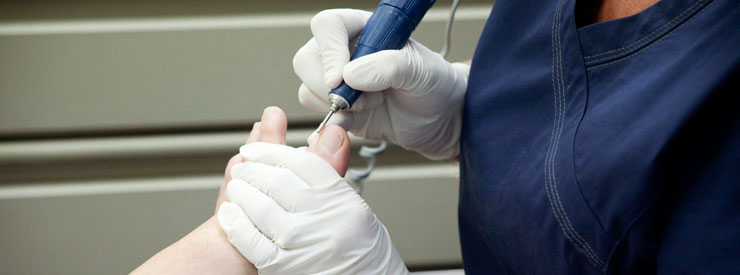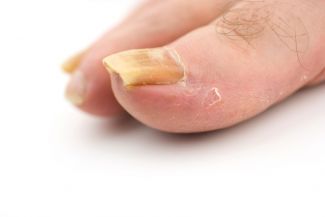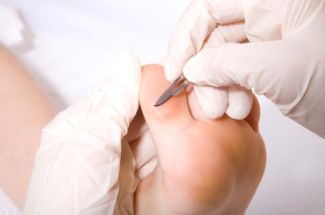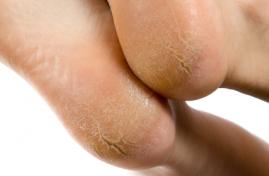Foot care
Podiatric treatments include nail and skin care. The podiatrist is authorized to evaluate the types of calluses and nail problems, and to determine their cause to recommend the appropriate treatments. In order to treat nails and skin properly, the podiatrist uses effective, safe and sterilized instruments.

1. Mycotic Nails

Onychomycosis is a fungal-type micro-organic infection of the nail. Sometimes, we notice yellowing, separation and thickening of the plate on one or several nails. Progression is often slow and rarely painful.
However, all thickened and yellowed nails are not necessarily affected. Other factors may change the look of the nails, like psoriasis, lichen planus, severe or repeated trauma and melanomas, although these are rare.
If you notice that the look of your nails has changed, you should see your podiatrist in order to get a diagnosis and a proper treatment plan.
2. Corns and Calluses (Hyperkeratosis)

Hyperkeratosis is often due to excessive friction and pressure on the skin. These may be due to ill-fit shoes, bone extensions (hammer toes, bunions) or biomechanical overloads on certain parts of the foot. Then, the surface layer of the skin is too much stimulated and thickens.
The thickening is sometimes diffuse (calluses or horns), sometimes localized (corns). The corns can make you feel like walking on a small rock, which can be very painful. Corns located between the toes are called “soft corns”.
Diabetic people and people with peripheral vascular problems are especially at risk of complications following hyperkeratosis. They are encouraged to see their podiatrist regularly to prevent injuries or complications.
3. Cracks

We often see cracks appearing at the heels. The thickening and drying of the skin lead to loss of elasticity. As we repeatedly put a lot of pressure on our feet, sometimes the skin cracks. Therefore the excess horn should be removed and emollient creams should be applied daily.
The podiatrist can prescribe different creams to help remove stubborn cracks, and will usually recommend foot care with debridement of the callus every two or three months. The use of pumice stone at home can be advised depending on patients, once a week.
Gatineau Sector
456, boul. de l’Hôpital,
Gatineau, J8T 8M5
Tel. : 819-568-0456

Responsible for the protection of personal information: Dre Lynda Cormier, podiatrist cpogatineau.cpo@gmail.com or (819) 568-0456.

